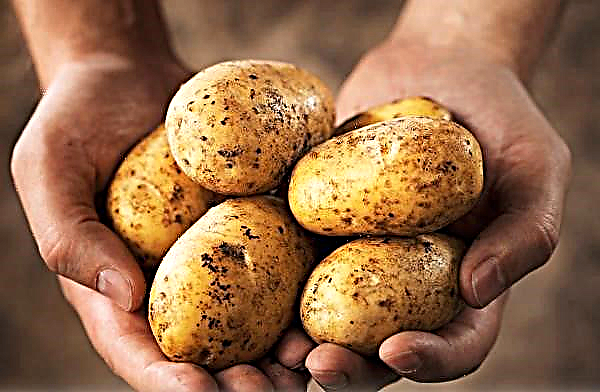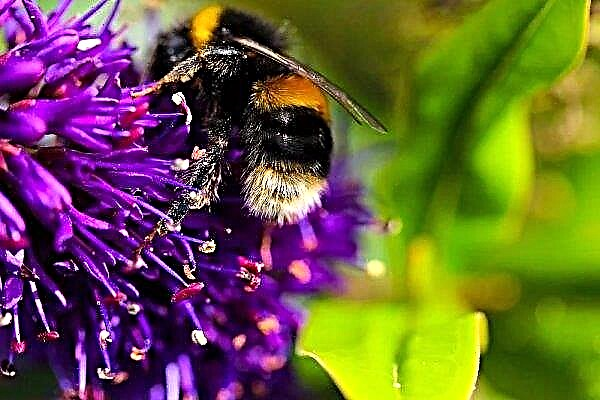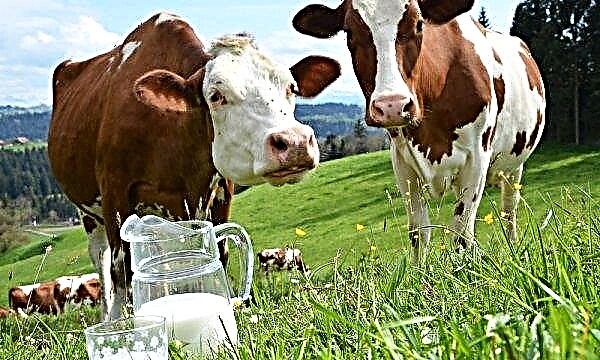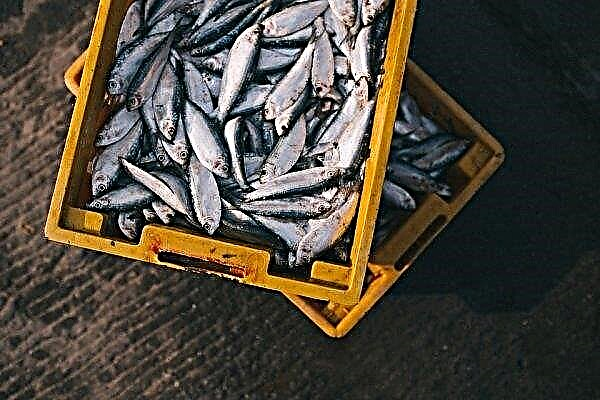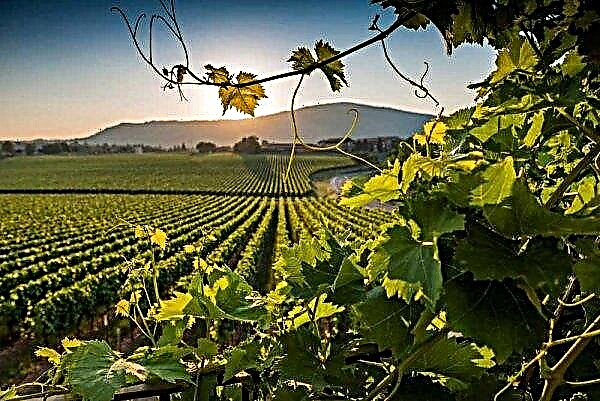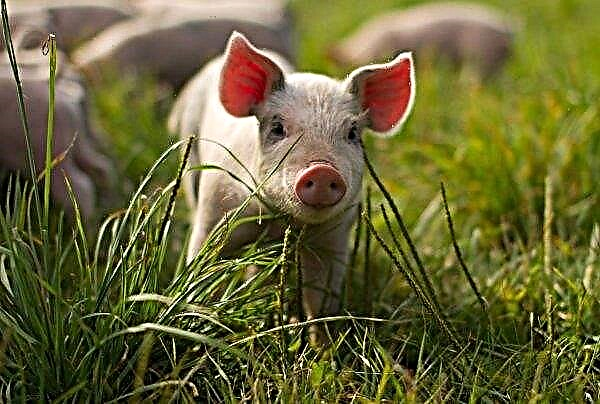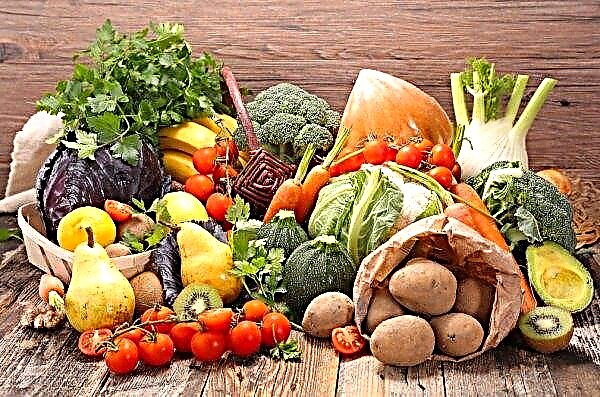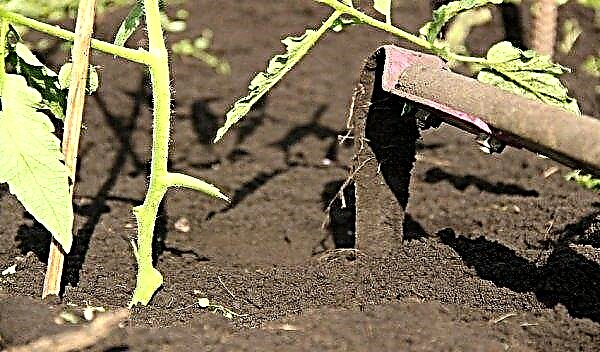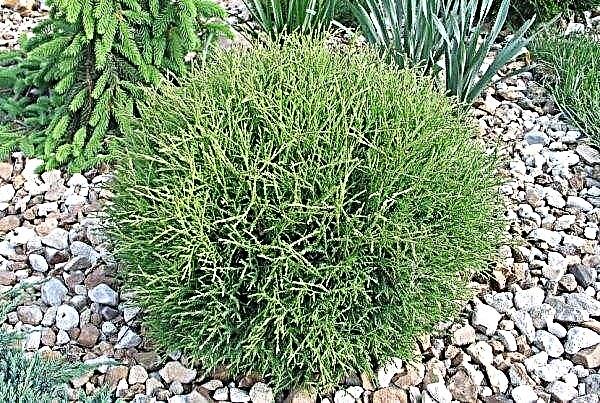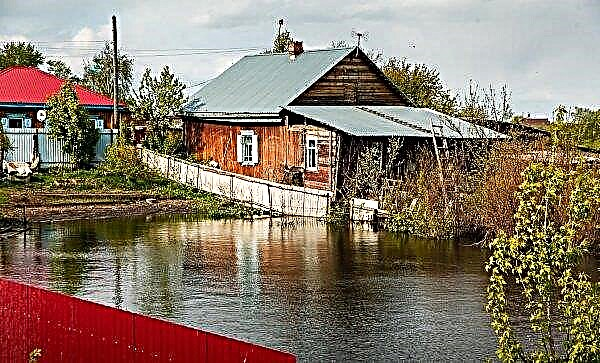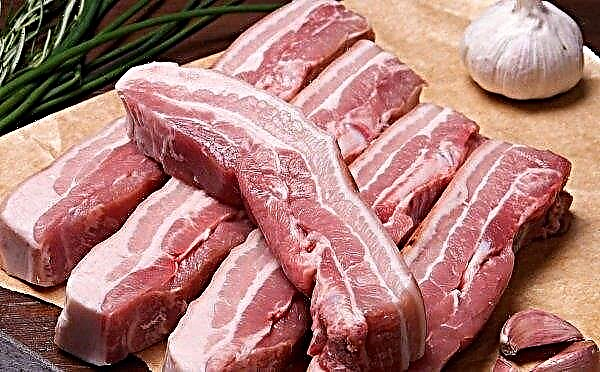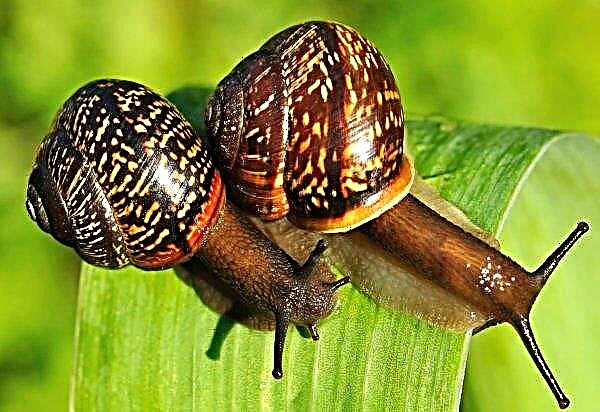Sowing peas has been cultivated by man for so long that scientists cannot say exactly when and where it happened. This culture is cultivated by almost every owner of a summer house or garden. You can try to grow it in the apartment. Let's consider how this pea is useful, how to grow it correctly at home and collect, how to deal with diseases and pests.
Origin of the variety
It is believed that sowing peas came to us from eastern countries and it was there that they were cultivated many years ago. Hindus cultivate this plant since ancient times, but the Egyptians met them much later. Pea seeds were found in dwellings dating back to the Bronze and Stone Age.
Photo gallery
Description of varieties
Now there are a huge number of varieties of this culture, but they are all grouped into three main variety groups:
- Shelling. It has smooth round fruits that contain a lot of starch and are easily split into halves. This type of pea is grown by agricultural organizations. It is sold whole, chopped or in the form of cereals on store shelves, and is used to make pea soup and other dishes. He also goes to feed animals and produce bioplastics from it. Its following grades are popular - “Alpha”, “Atlant”, “Viola”, “Emerald”, “Premium”, “Tropar”, “Fragment”. Such a variety as Atlant is grown not only for grain, but also for canning young green peas.
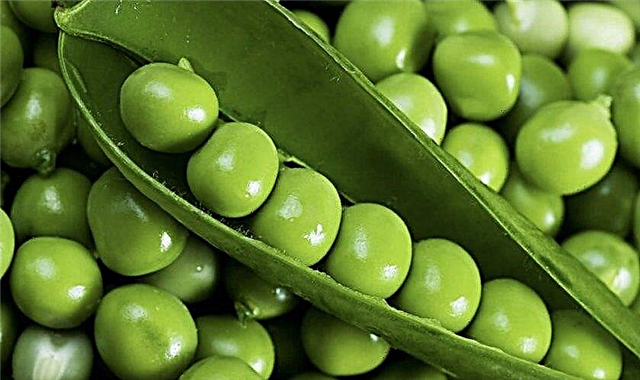
- Cerebral. Its round seeds begin to wrinkle when ripe, become similar to the brain. They are sweetish in taste and remain solid during cooking, have 6–9% sugar. Used for preservation and freezing, actively consumed in the state of green peas. His best varieties include such - "Belladonna", "Debut", "Kelvedon", "Honey", "Sweet Giant".
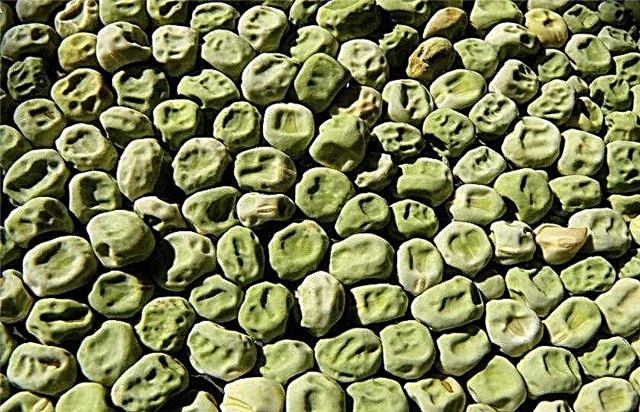
- Sugar. Its seeds do not become hard when boiled. When ripe, they become wrinkled. Young beans can be consumed without clearing the cusps. It is loved by children and adults, it is most often grown in personal subsidiary plots. Popular varieties - “Zhegalova 112”, “Rib”, “Inexhaustible”, “Sugar 2”, “Firstborn” have a sugar content of about 10-11%.

Effect on the body
This vegetable crop has a rich composition. Fresh green peas are most useful - it is low-calorie (55 kcal / 100 g), contains a group of vitamins B, vitamin A and carotene, vitamins E, H, PP and a lot of ascorbic acid, a very large range of macro and micronutrients, chlorophyll. Even boiled grain contains vitamins B1, B2, PP, E, a little vitamin A and carotene, as well as potassium, calcium, phosphorus, magnesium, sodium and iron, but its caloric content increases (130 kcal / 100 g). Both products contain easily digestible proteins and 4 essential amino acids.
Beneficial features
The use of peas on the human body has the following beneficial effects:
- prevents the appearance of cancer, as it contains antioxidants;
- prolongs youth;
- is the prevention of cardiovascular disease;
- lowers cholesterol;
- removes puffiness;
- activates the brain;
- boosts immunity;
- improves metabolism;
- beneficial effect on the skin;
- promotes better digestion;
- Eliminates migraine.

Peas should be included in their diet by vegetarians and vegans to supplement the body with protein.Did you know? In alternative medicine, in case of urolithiasis and diseases of the prostate gland, green mass of sowing peas is used. To do this, 30 g of greenery is poured with boiling water and insisted for half an hour. Drink 1/3 three times a day before meals.
Harm and contraindications
The use of peas can cause the following negative consequences:
- increased gas formation;
- purine production.
 Therefore, pea consumption should be discarded in such cases:
Therefore, pea consumption should be discarded in such cases:
- gout;
- renal failure;
- flatulence;
- exacerbation of diseases of the gastrointestinal tract;
- with allergic reactions.
Important! It should be used with caution by pregnant women, since it can cause bloating, although in general it is useful to them, as it contains a large complex of vitamins and minerals necessary for the proper development of the child.
Planting and growing at home
This culture is self-pollinated and unpretentious enough to grow at home. To do this, it is best to choose low-growing sugar varieties (about 60 cm tall), but if it is possible to make a trellis, then you can plant tall ones (up to 1.5 m). In the latter case, you need to worry about the support. In early varieties, the first beans can be harvested already two months after emergence.
Location and climatic conditions
A well-lit place is suitable for growing, but in winter the plant will require additional illumination. Peas grow best when the daylight is 12 hours.
In cold weather, the window sill with a temperature of +16 ... + 18 ° C or a warmed balcony is quite suitable for him, and in summer or during warm off-season periods, a container with peas can be kept outdoors. Its seedlings can tolerate a decrease in air to –6 ° C.
Peas do not like heat and at temperatures above +26 ° C the development and fruiting of this plant is greatly reduced. This hygrophilous plant requires constant watering and a minimum soil moisture level of 70–80%. To obtain green peas, you should choose a sufficiently deep and spacious container and choose the material for the garter of tall varieties. You can buy a plastic container, or you can use a wooden box. If the goal is to get sprouts, then you can use smaller containers.
To obtain green peas, you should choose a sufficiently deep and spacious container and choose the material for the garter of tall varieties. You can buy a plastic container, or you can use a wooden box. If the goal is to get sprouts, then you can use smaller containers.
Seed treatment
Before sowing peas, it is recommended to soak and germinate. If the seed is not of the highest quality, then you must first calibrate them. For this, the beans are placed in a saline solution prepared at the rate of 1 tbsp. tablespoon of salt in 1 liter of water. Corrupted seeds will emerge, and good ones will be below. Then they should be soaked for 20 minutes. in a solution of potassium permanganate, and then rinse.
High-quality and already pickled seeds can be immediately soaked for 4 hours in warm, settled or purified water, changing it for the whole time at least once. Then the seeds for germination are placed in a damp rag and cleaned in a dark warm place. Every day they check for the appearance of sprouts and control their moisture. Typically, the seeds hatch in the first few days.
Then the seeds for germination are placed in a damp rag and cleaned in a dark warm place. Every day they check for the appearance of sprouts and control their moisture. Typically, the seeds hatch in the first few days.
Soil preparation
Pea grows successfully on all soils except acidic. You can buy ready-made nutritious soil for growing vegetables, or you can cook it yourself by mixing in equal proportions humus (rotted manure), turf-leaf soil and sand. It is permissible to take the earth from the garden, but to disinfect it, for example, watering it with potassium permanganate or calcining it in the oven for half an hour at a temperature of +90 ° C.
In acidic soil, you can add:
- ash;
- dolomite flour;
- slaked lime;
- humus tablets.
 Hard soil should be loosened by adding humus, sand or vermiculite to it.
Hard soil should be loosened by adding humus, sand or vermiculite to it.Sowing technology
Hatching seeds are planted in prepared containers with soil at a distance of 5–7 or 10–15 cm (for tall varieties) from each other and at a depth of 2–3 cm. For seedlings or sprouts, more crowded planting is used - the seeds are sown with aisles of 2– 3 cm and 1-2 cm from each other.
Crops are watered and planted until emergence in a warm place, but not too close to the hot battery. You can cover the container with a bag on top to create a better microclimate for friendly shoots, but in this case you will need daily ventilation. After emergence, the peas must be fed (10-15 g of superphosphate per 5 l of water) and placed in a permanent place.
Watering and fertilizer
The soil in which peas grows should not dry out and the plant should be regularly watered. Usually, before blooming, watering is carried out 1-2 times a week, and then almost every other day. It should be watered with settled or purified water at room temperature. In apartments with high air dryness, peas will have to be watered daily.
When the crops begin to enter the flowering phase, they need to start feeding every two weeks with this composition (for 5 liters of water):
- superphosphate - 5–7 g;
- potassium salt - 5–7 g.
Loosening the earth and weeding
After each watering, it is necessary to loosen the soil, providing air access to the root system and remove weeds.
How to collect and store
The first to ripen the scapula located in the lower part of the plant. Fruiting can last up to 2 months and from each bush of peas you can get up to 0.5 kg of the crop. They are carefully collected every 2 days, gently holding with your hand so as not to disrupt the excess.
To obtain greens for salads, it is optimal to collect peas in the phase of 3-5 leaves, and if the stem is coarsened, then it is cut and shoots are used.
Did you know? Chlorophyll “green” cocktails are very popular now. They are an excellent prophylaxis of aging and protect against many diseases, including cancer. In them, various greens and sprouts are interrupted in a blender, often with the addition of fruits and vegetables.
Possible growing difficulties
Even if all conditions are created for the successful growth and fruiting of peas, pests and diseases can interfere with the normal development of the plant. The probability of their occurrence at home is low, but still requires attention.
Pests
Consider the most common pests and how to get rid of them:
- Pea aphids. The size of such an insect is 5 mm, and its wingspan is about 11 mm. Aphids strongly affect plants in dry weather. Such insects, feeding on the juice of plant crops, inflict small wounds, which leads to fungal diseases. Peas are usually struck during the formation of buds before flowering, which greatly depletes the plant. To eliminate them, chemical preparations of the type "Fastak", "Spark" are used.
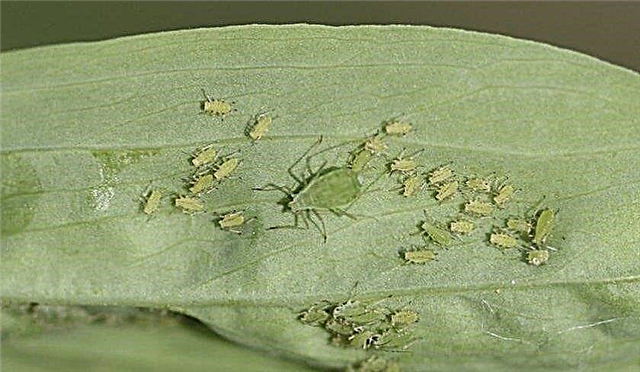
- Pea weevil (bruchus). Parasitizes mainly during the onset of drought, especially during flowering. These insects, eating pollen, greatly affect the buds. Control measures should be taken immediately upon detection of these pests, as they quickly affect all crops. For this purpose, all pea bushes are treated with saline.
- Pea moth. These are quite large insects - wings in the range of about 15 mm. Such pests, eating leaves of plant crops, greatly affect them. On the leaves of the female stalk, eggs are laid about 1 mm in size, from which yellow caterpillars appear afterwards, growing up to 10 mm long. Such larvae begin to eat leaflets, which greatly depletes peas. To eliminate pea codling moths, they are treated with a product that is prepared from tobacco, wood ash and celandine. To strengthen the peas, fertilizers are applied to the soil.
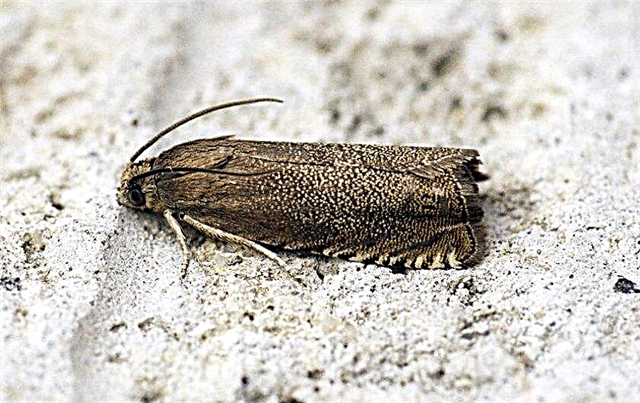
- Nodule weevils. Appear in early spring and quickly destroy the leaves of the plant. Against them, they are treated with ash and tobacco, or appropriate chemical preparations are used.
- Colorado beetle. Lays eggs on foliage, from which very voracious larvae appear. They quickly destroy the leaves, eating them. Larvae and beetles are collected manually from small areas or appropriate chemicals are used.

- Umbrella leaflet. Small insect pest with a yellowish color. It penetrates the leaf tissue and feeds on it, which leads to a sharp slowdown in growth, deformation and the gradual death of leaflets. Bushes also stop growing and begin to die. For the fight, agents from ash and celandine are used.
- Pea Scoop. This butterfly with a wingspan of about 3 cm affects many plant crops. She lays on foliage larvae, which, when born, begin to feed on juicy leaves. To eliminate such insect pests, insecticides and biological protective agents are used.

Did you know? Pea seeds can simply be sprouted in gauze and consumed for cooking. This will be an excellent and quick replenishment of the body with vitamins and other useful substances in winter and spring.
Disease
Another problem for growing peas and getting a good harvest is disease. Consider the main ones:
- Ascochitosis. It manifests itself in the form of the appearance of yellowness on the leaves, which after a while acquires a dark grayish color. Then the leaves die off and the plant dries. To eliminate ascochitosis, peas are treated with a solution of bleach.

- Rust. Often such a disease plant crops suffer during the formation of buds and flowering. The appearance of rust contributes to increased humidity, for example, frequent and heavy rains. Affected areas are removed. When the rains stop and dry weather sets in, the disease goes away by itself.
- Peronosporosis. It often appears in the spring in the form of yellowish spots on the leaves. If it affects the plant during the fruiting period, then the lines of peas, on which white spots appear, are also affected. To eliminate the disease, a solution with sulfur content is produced (taken in a proportion of 100 g per 10 l of liquid). The bushes are sprayed three times within 30 days.

- Anthracnose. This fungal disease leads to the death of the plant. You can detect the disease by brownish and gray spots of different configurations on the leaves. Approximately in the middle of the sheet, pads with spores of a reddish color are visible. There are no means of struggle against anthracnose. Therefore, the affected plants are removed and disposed of (burned).

- Fusarium It manifests itself in the form of root rot, leading to the death of the plant. With this disease, the leaves turn yellow, and then gradually fade and die. To prevent the disease, it is recommended to decontaminate the land before planting.
- Powdery Mildew A fungal disease that initially affects the stipules and leaves of peas, and eventually peas in the line. A grayish-white coating appears on the beans. To prevent this disease, you must choose mildew resistant varieties for planting.

- Rot. Fungal disease, which is detected in the form of grayish-white rot on pea bushes. Rot gradually affects the root system, which leads to the death of the plant culture. Sometimes it affects the lower leaves of peas in the form of formations of rotting pinkish-white color. To eliminate the disease, the affected bushes are removed and disposed of.
Useful care tips
When growing and caring for peas at home, it is advised to do the following:
- regularly add mineral and organic fertilizers to the soil, which will contribute to growth and fruiting;
- do not forget to loosen the bushes with peas for enrichment with air and useful trace elements;
- choose for planting only undersized varieties of sugar peas with increased productivity and high resistance to various diseases;
- Due to the rapidly growing roots, peas need a lot of space. Therefore, in order to get a high yield, a five-liter capacity should be taken for two peas;
- when planting in the winter, this bean must be highlighted with a fluorescent or phytolamp; and often watered. Therefore, it is necessary to ensure proper drainage and be sure to choose a capacity for landing with holes at the bottom to remove excess moisture.
Peas can be grown at home, but in order to get a good crop of blades it is necessary to create optimal conditions. If this is not possible, then it can be grown to produce sprouts and vitamin greens for salads.Did you know? Thin sticks should be used as a support for peas, since its antennae cannot cover thick objects.You can use a special plastic mesh.











